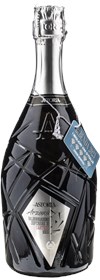Sticking with our sweet treats theme for the week leading up to Christmas, we’re going to be looking at another delectable Italian dessert that we think makes an amazing addition to any Christmas meal.
We’re also sticking with the sweet bread theme with a cake that’s similar to Panettone in many ways, though perhaps just a little bit less fruity.
Without any further ado, let’s jump straight into the recipe for Pandoro.
What is Pandoro?
Pandoro is a favourite Italian dessert that is traditionally eaten around Christmas and New Year’s. It’s especially popular in Verona, with many of the Pandoro cakes that you may find in stores coming from that region of Italy.
The use of icing sugar also has a bit of a symbolic purpose as it makes the cake look just a little bit like the Italian Alps during the winter months.
Early versions of the dessert have existed since the Middle Ages and Pandoro is mentioned as far back as the 17thcentury as a favourite of the nobility.
Of course, it’s a lot more accessible now. And we’re going to share with you another recipe from the BBC Good Food website that will give you an amazing Pandoro.
And as a little bonus, we’re even going to recommend an Italian wine or two to drink with it.
This Pandoro recipe creates a cake that serves 10 people and it requires just a little bit of preparation before you can start cooking.
The Ingredients
To make this cake, you’re going to need the following ingredients:
- 125g of caster sugar
- 500g of strong white flour
- A little extra flour for dusting
- 5g of salt
- 150g of softened butter
- A little extra butter for pan greasing
- 10g of fast-action yeast
- One orange and one lemon zest, both finely grated
- Two medium eggs, ideally with dark yolk
- Two egg yolks
- 100ml of warm milk
- Two teaspoons of vanilla paste
- Plenty of icing sugar for dusting.
The Method
A lot of the work that you’ll put into this cake goes into the preparation. Once you’ve gotten it ready, the baking is the easy part. These are the steps that you have to follow.
Step 1
Fit your mixer with a dough hook and add your flour to the bowl.
Then, add your caster sugar and salt to one side of the bowl, with the yeast going on the other.
Then, add your eggs, egg yolks, vanilla, milk, butter, and zests into the centre of the bowl.
Set to mix at a slow speed. You should get a wet and sticky dough starting to form.
Step 2
Once the dough starts forming, increase the mixer’s speed and leave for about ten minutes. The end result should be a dough with a much thicker consistency. You should also start to notice it sticking to the dough hook. Keep mixing if your dough keeps falling off the hook.
Step 3
Leave the dough in the bowl for a minute and light dust a kitchen surface with flour.
Tip your dough onto the floured surface and start kneading it into a ball shape.
Grab a bowl and apply a light butter greasing to it. Add the dough and cover before setting it aside overnight. The dough should double in size.
Step 4
The next day, use butter to lightly grease a 500g Pandoro mould.
Set that to the side and dust a kitchen surface with flour. Pour your dough onto the surface and fold it a couple of times.
Then, shape the dough into a ball and pop it into your Pandoro mould. Gently manipulate the dough so it fills all of the mould’s corners.
Cover the tin and leave the dough to rise to the mould’s lip. This should take about 2 hours.
Step 5
While you’re waiting for your dough to rise, preheat your oven to 190 degrees Celsius.
Take the cover off your mould and place it into the oven. Leave to bake for between 35 and 40 minutes. The cake should take on a golden brown colouring and a skewer should come up clean after insertion into the cake’s centre.
Step 6
Remove the mould from the oven and leave to cool for about five minutes. Then, turn out onto a wire rack and leave to cool fully.
Step 7
Trim the base and stand the cake up on a serving plate. Slice it horizontally several times and rotate the slices to achieve the eight-sided shape that the cake is known for.
Finish the cake off by dusting it heavily with icing sugar before serving.
The Wine
You have a super sweet cake on your plate now, which means any wine that you choose has to be capable of complementing all of the sugar.
Much like with Panettone, a great Italian sparkling white wine is the best choice here. The dryer the better too.
Of course, that means that Prosecco is always a good choice. It’s light enough to allow you to enjoy the dessert, without being so fruity that it overpowers the sweetness of the Pandoro.
You can also go in the opposite direction and consider matching sweet for sweet. While we’d recommend avoiding complex red wines, a sweeter dessert wine will work really well with the dessert. Just take care not to end up feeling like you’ve had a sugar overload by the end of it.
The Final Word
Pandoro is the perfect Christmas dessert for the picky eater.
At its heart, it’s a pretty basic cake with a lot of sugar added for sweetness. The zest gives it a little fruitiness without being overpowering.
And of course, you can add creams and fruits to the package to give it that extra bit of flavour.
It’ll go down a treat at your next Christmas party, especially if you have guests that are a little put off by the fruitier fare that often finds its way into dessert bowls during Christmas. Combine it with the right wine to create a dessert that you’ll remember for ages.














